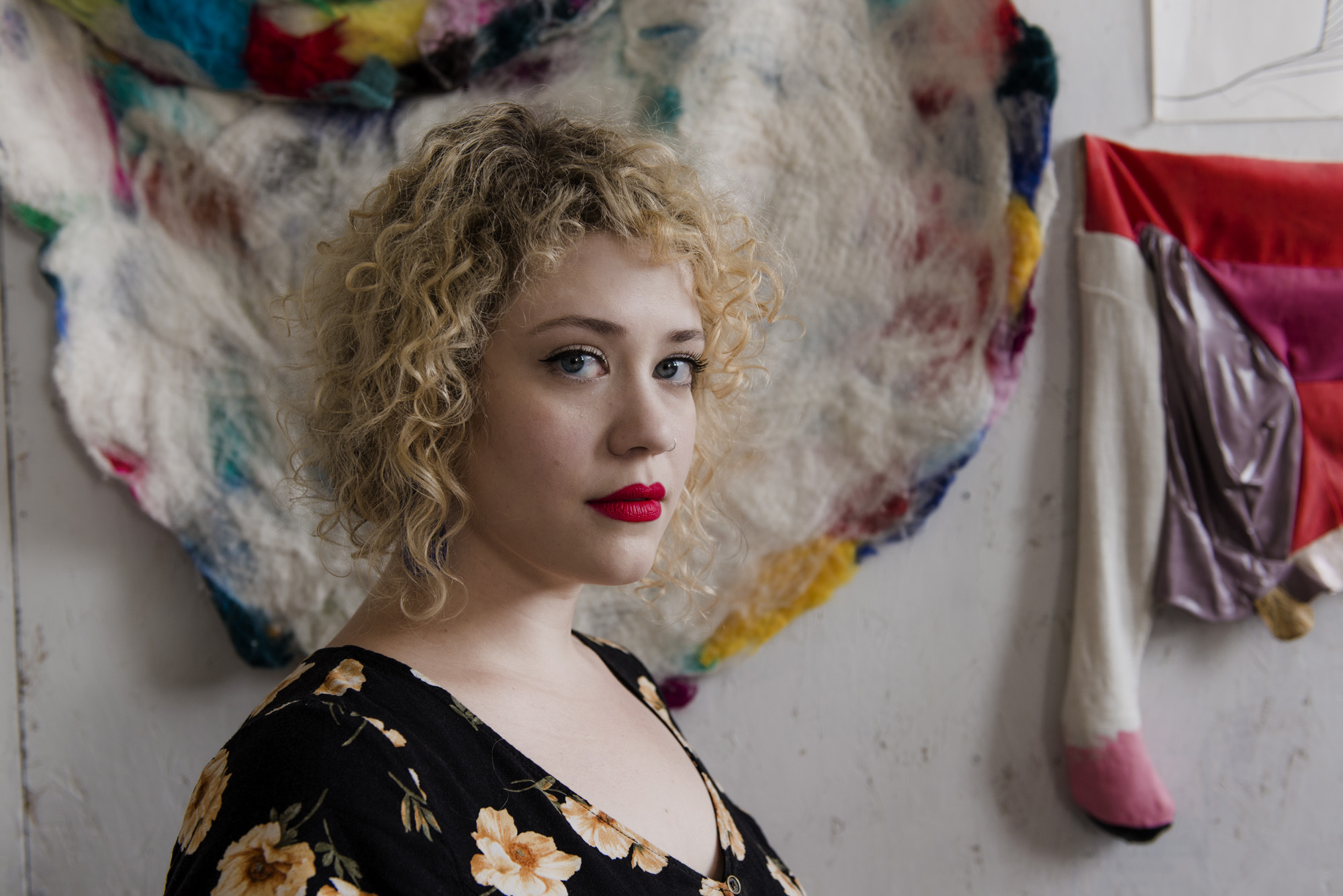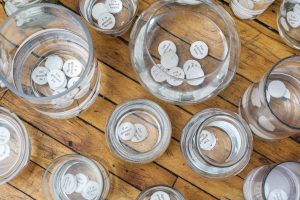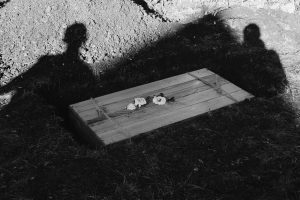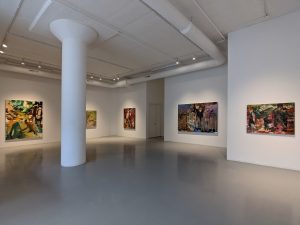“Intimate Justice” looks at the intersection of art and sex and how these actions intertwine to serve as a form of resistance, activism, and dialogue in the Chicago community. For this installment, we talked to Anna Showers-Cruser in her McKinley park studio about queer identity, relationships to experimentation, and Southern hospitality.
S. Nicole Lane: I’m really excited to interview you because, obviously, I love your work. Where are you from?
Anna Showers Cruser: I’m from Richmond, Virginia, and my family’s from southwest Virginia and we hail from Appalachia also. And I went to MICA for undergrad in Baltimore and lived there for a while. And then went back to Richmond, kind of was interested in that small-town or Southern city kind of art scene there, but I definitely kind of wanted to go to a bigger city for grad school. I went to UChicago and that was a cool program because it’s small and interdisciplinary but, as you know, part of a larger institution. So that allowed me to do a lot of play and exploring in my practice, but is also incredibly rigorous to go there and you get a lot of opportunity for feedback from such a breadth of artists — like Pope.L, Catherine Sullivan, Jessica Stockholder — these people who have incredibly varying practices. It was so new to have so many different kinds of eyes on my work that two years felt very truncated.
It’s like that feeling when right when you’re about to get somewhere [snaps fingers] it goes farther away from you, you know? And then, I decided to stay here because I felt like I had just scratched the surface of knowing what it was to live in Chicago. And UChicago, and Hyde Park in general, can feel kind of isolated, so I moved to Pilsen and found a place here and have been working since then. I feel like mostly I’ve shown in Chicago, but I’m trying to change that.
SNL: And were you always interested in sculpture and 3D objects, or did you start out with a specific medium?
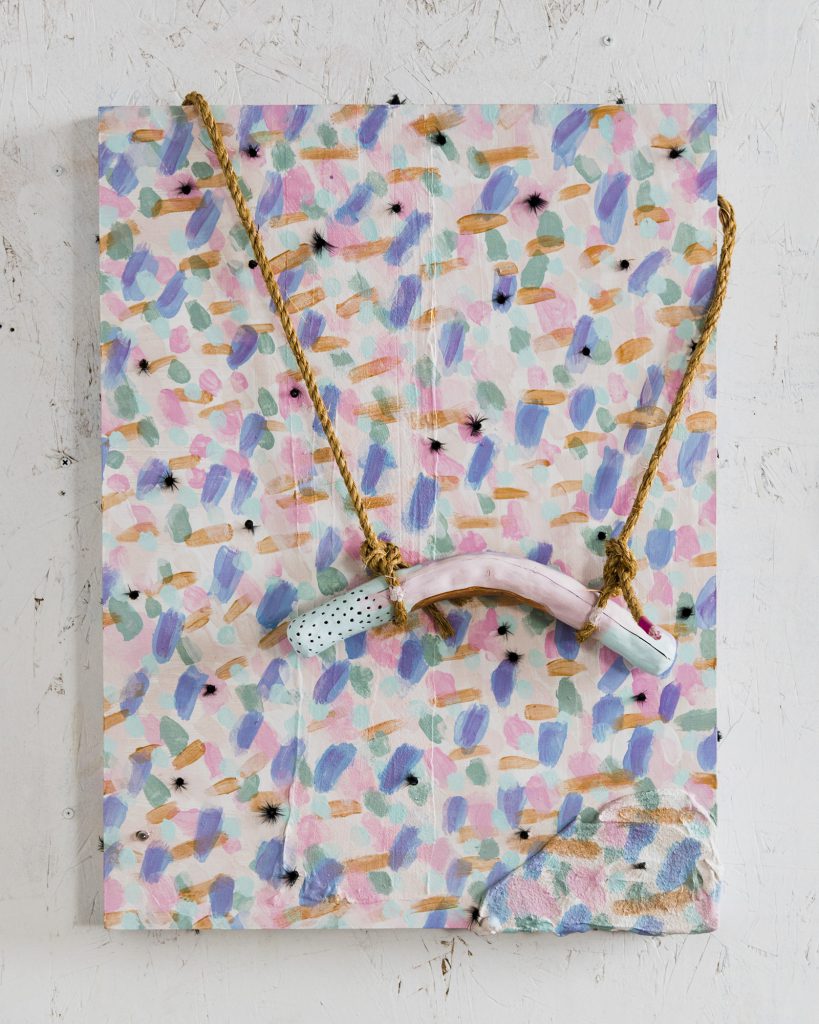
ASC: I was trained pretty traditionally in painting at MICA. At the time most of the professors that I was working with were pretty old-school with the way that they taught. I was doing more traditional oil painting and then I realized that I wasn’t as interested in painting the figure as I was in the bodies that I was seeing. And I have just always kind of been obsessed with bodies — both from the miniscule and microscopic, like psychology, and moving outward to how bodies move and interact in space, not just sex but also just moving around together like the way that bodies kind of, like there’s no escaping it. [laughs] There’s no escaping your own body, there’s no escaping having to interact with other bodies, and I was really interested in the way that models and figure stands and things are posed, but they’re still these living, breathing people.
I realized I zoomed in and then I was doing a lot of work based off of kind of biology and anatomy and intersexuality. Then I realized that the best way to talk about the physical body is to start using physical objects and physical form. Not that 2D can’t as well — and I’m now returning to 2D a lot more.
I’m kind of working in an intersection of craft. I had a lot of discussions in grad school about what “Sculpture” with a capital “S” would mean. [laughs] And coming from the South, there’s a whole discussion about tradition of craft-making and things like that, too.
SNL: Yeah. The work there is really traditional and very craft-based. I think that’s why I had to leave that area because it was just very traditional, which is great in its own sense but just being in that environment all of the time is really limiting.
ASC: Yeah. I think that what Chicago has allowed me to do is really lean into the idea of trans-disciplinary practice and the intersection of these different media because I think it’s pretty difficult to create work that just is one thing anymore? Especially with the advances in technology and when the dissemination of an image is so quick that not only do you have to think about one person interacting physically with your work but also what it means to then have that turn back into an image. And I think that what you’re speaking to is this kind of tradition of wanting things to be nameable, and wanting things to fit into a certain kind of static identity of what it is. So people will work forever at traditional ceramics or embroidery or weaving or whatever it is — which is incredible — but I definitely feel like that didn’t resonate as much with me. Yeah. So not that I don’t appreciate a good embroidered dog pillow. I can look at those all day. And I want to make one. I’ll fuck with some latch-hook. I’m considering how to incorporate more relics of what I grew up around and things that I think I’m accepting more.
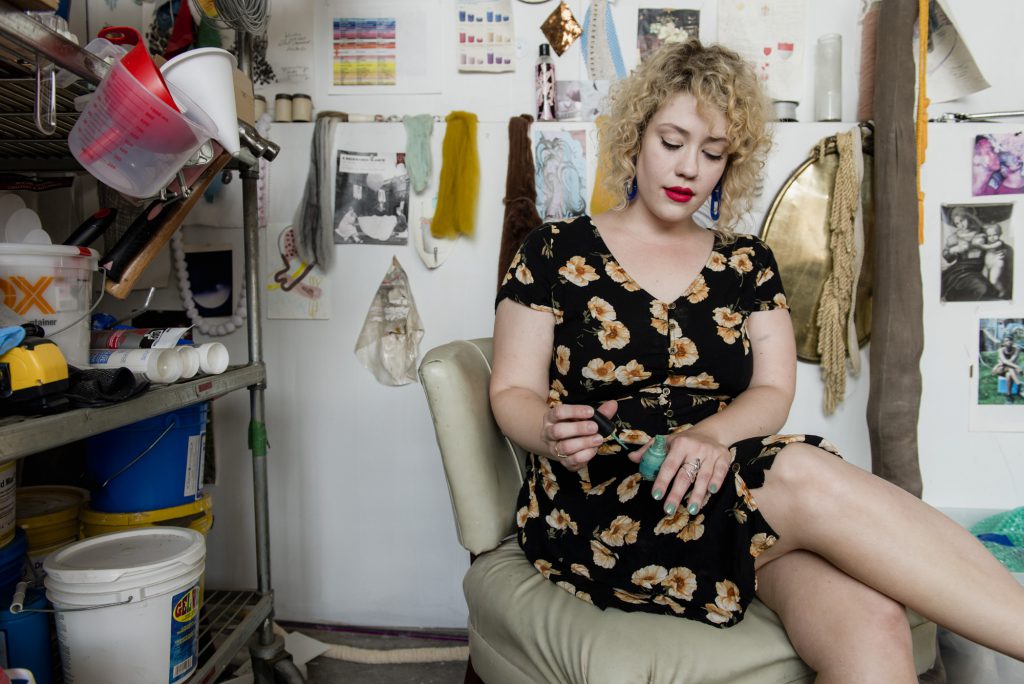
SNL: What kind of relics?
ASC: I think for a long time I turned my back on or looked down on the fact that I grew up with a lot of stuff. My parents are social workers and part of just being their generation and really, you know, both working in these kind of fields where confidentiality is key, they just kind of still haven’t translated or put everything into the digital realm. So we just constantly had a lot of paperwork. And also, just based on their own histories, just happened to be people who hold onto things. And so it didn’t even occur to me, until well into I started making sculpture, that I’d already been living with these really interesting objects for so long.
I kind of tried to push that away, as much as I kind of pushed away that a “queer aesthetic” had to mean DIY or a lot of craft objects. I realized I was kind of embodying this own bias against accumulation of stuff and against the idea of something that looked too handmade. I had this mini-epiphany where I looked around at my home, like my childhood home, after being away for a while and realized that there were so many things that I couldn’t get away from, that I had been sketching about and writing about and not even realizing it.
SNL: Yeah. Yeah. Kind of coming back to your individual pieces that I see here in front of me, I don’t think I knew that some of the pieces were so large.
ASC: I realize that for a long time, I shied away from making things that are larger, because I liked this idea that things were a little more intimate, and then I got into this idea about things being a family of forms. And I’m still really interested in that, that the objects that I make I definitely anthropomorphize. I feel like they have their own personalities and I want people to feel like they’re peers. Whether this is an object — a sculpture — that you would usually stay away from [laughs] in your own life or whether it’s something that’s really enticing. I liked amping up the scale a little bit in some of the works. You can kind of step back from it and still get up close and have some of these teeny tiny rewards for close looking.
SNL: Mmm hmm. And you use a lot of pastels and lighter tones in a lot of the pieces. You work with a lot of different materials and objects. Is this papier-mâché?
ASC: Yeah, I work a lot with silicone, a lot with synthetic and real hair, from — I think this is actually yak pelt, so this isn’t human hair, this is animal hair, ethically sourced [laughter] — along with synthetic and human hair. Something that’s in my lexicon, for sure, is the plaster gauze, and I came to that in kind of a funny way, that started when my partner at the time was looking for ways to affirm their gender identity. We kind of entered this process together of curating masculinity — finding, for example, a way to use testosterone cream that at the time was applied in a particular way, to the point that there became a ritual not only of the cream but also of binding. So binders and the cream became this kind of daily ritual of trust that I was engaged in — it physically and emotionally involving two people.
I became really interested in the process of binding one’s body and also, sometimes, the inherent necessity in harming yourself to be able to literally get through the day. And, over time, it really does, in some ways, take a toll on you to be binding things down super, super tightly. It resonates as an abstract idea, but differently when you see the marks and you see how difficult it is for someone to breathe. Over time, watching that material degrade, watching it accumulate sweat … the photographer Elle Perez has some beautiful work showing this.
And so I was experimenting, like “Okay, I need to take these binding materials and dip them in plaster,” and then I realized, that already exists! [laughs] Plaster cast gauze is already a sculptural and medical material, so it was just this really funny moment where it happens to be convenient but it’s an effective, cheaper, very readily available material to be able to act as a stronger paper mache. That’s a really long way of saying, yes, I use papier-mâché, but most often it’s plaster.
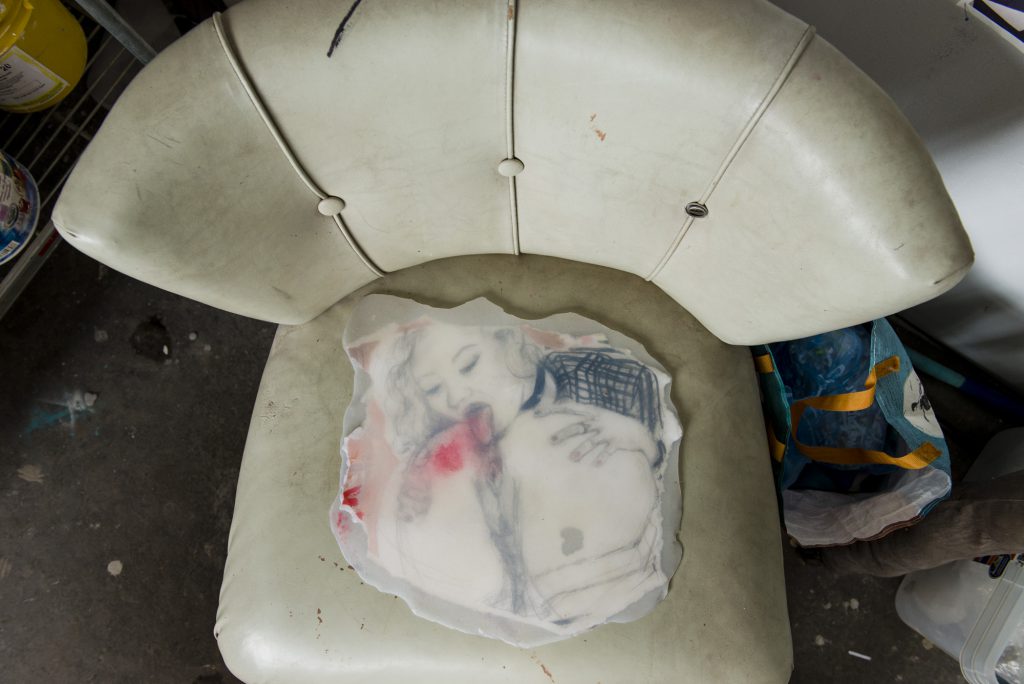
SNL: I usually ask artists how they view their work in this column as it pertains to politics. How do you feel like your work is resisting? Obviously a lot of your work touches on queerness and the body and sexuality and all of that.
ASC: I think “Intimate Justice” is a really incredible name for it, too. I think it’s true how some of those things (gender, sexuality, politics) do tend to get confused, or become interchangeable to people on the outside of those identities.
Until queer history and literature classes in undergrad, I hadn’t really understood that kind of pattern in hegemonic, patriarchal society of designating or confusing queer people with hypersexuality. I feel like queer people have been sexualized in so many ways. And I realize that “queer” is this term that encompasses a lot of identities. I think about how people who may consider themselves queer might not interact in a way that’s “out” to others. Anyway, I feel like especially now, especially in this climate — that some people are seen as radical for just living their lives or doing the mundane. At the same time, if you are a queer-identified maker and you want to celebrate sexuality, it is another task to do that and not to feel like you have to censor your own work. There’s so much censoring and violence being done still to queer people, not only here but all over the world — like, I am lucky enough to be in a position where I don’t have to self-censor a lot. I don’t have a family where I’m in danger of – I’m not in danger in terms of what my family thinks, I’m not in danger in terms of living in Chicago, and my ethnicity and femme identity allow me to pass in very privileged ways in different environments, so I feel like given that, it is important for me to not shy away from talking about these things in my work.
I think that my work has a really strong relationship to experimentation. It deals a lot with coding, and I’m interested in flagging (particularly femme-identified people’s adaptation of the gay cruising “hanky code” practice from the 1970s) and how you can communicate your sexuality, your interest, and also your gender. But my work definitely is interested in both hiding and revealing those codes. Sometimes it might seem really “innocent,” like in the use of pastel or saccharine tones, or the use of kind of colloquial or readily accessible materials where it feels…friendly! [laughs] Or really humorous.
SNL: Playful.
ASC: Right! Playful. And hopefully, at times, drawing people in and taking a stance that a sexual experience does not have to be something that’s really serious or something that’s threatening. Specifically, I have seen a persisting tendency to openly “accept” LGBTQ people but relegate queerness to this idea of, like, “it’s only nightlife!” or only really experimental sex that is outside of what a “healthy” dynamic would look like. I am really interested in BDSM and power dynamics and I’m interested in how that aligns, in a lot of ways, with Southern hospitality [laughter], and the power dynamics that are at play between both of those things. I find that inherent in both are covert and overt codes.
It’s kind of funny because I kind of have that awareness through other people seeing it, and not when I originally started making the series that I’m working on now. I started making them because I was interested in kind of the materiality of who I was living with, and who I cared about, and my own body, and I didn’t necessarily see those things as being hypersexual until through the lens of critique and through the a studio visit where someone asked “What’s with the sex stuff? I’ve seen it all before.”
“Those things over there look like drag queens’ fingernails and that over there looks like a cum rag and that over there …” and I know now that it was said with love, but it was just this quick, nameable thing for some people. And so I kind of wanted to kind of explore from there. “Okay, so what is overtly sexual about certain objects versus others, or about certain bodies versus others?” So yes, sometimes the work is more obvious. Like there’s a drawing of somebody who looks like me giving someone a rim job — you’re sitting on that right now. [both laugh]
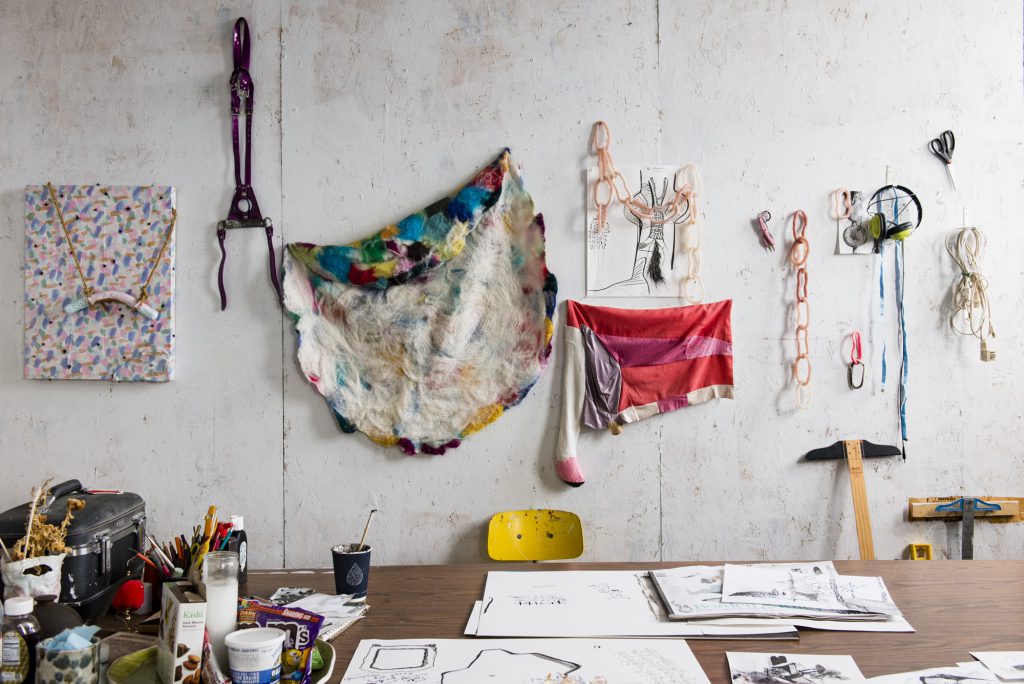
SNL: Yeah, and I definitely think, even this piece [a nearby sculpture], it’s sensual to me because there’s hair and there’s these strange things sticking out of it–
ASC: There’s macramé hair on the other side. I actually used Barbasol and Vaseline to macramé this hair which is all covered in dust now. This is called “Tuck and Roll.” So this kind of started — really kind of jump-started — a couple of series’ for me. And I was kind of embarrassed to show it because I felt like it was maybe too silly at the time, and making this felt like making a portrait of someone I knew or a portrait of myself in some ways, and so I felt a little – I was more tentative. And now I feel like I’m just oozing my mess all over the place. But I really liked it because it implies use but you can’t actually make it function, as like something that supports your body very well? And you don’t exactly know what use it’s implying.
Is it a sex – like one of those really expensive mounts or props, you know, for different sex positions? And then it also looks like a pommel horse. I really love combining textures. And anything kind of synesthetic chance — seeing something and knowing how it feels, or feeling something and hearing exactly how that would translate into sound. I definitely, like a lot of artists, have this kind of compulsion to touch. So it’s important to me to combine a lot of different textures.
SNL: What projects or series are you working on now?
ASC: So I’m still working with this idea of the Southern proper “HostX” gifts.
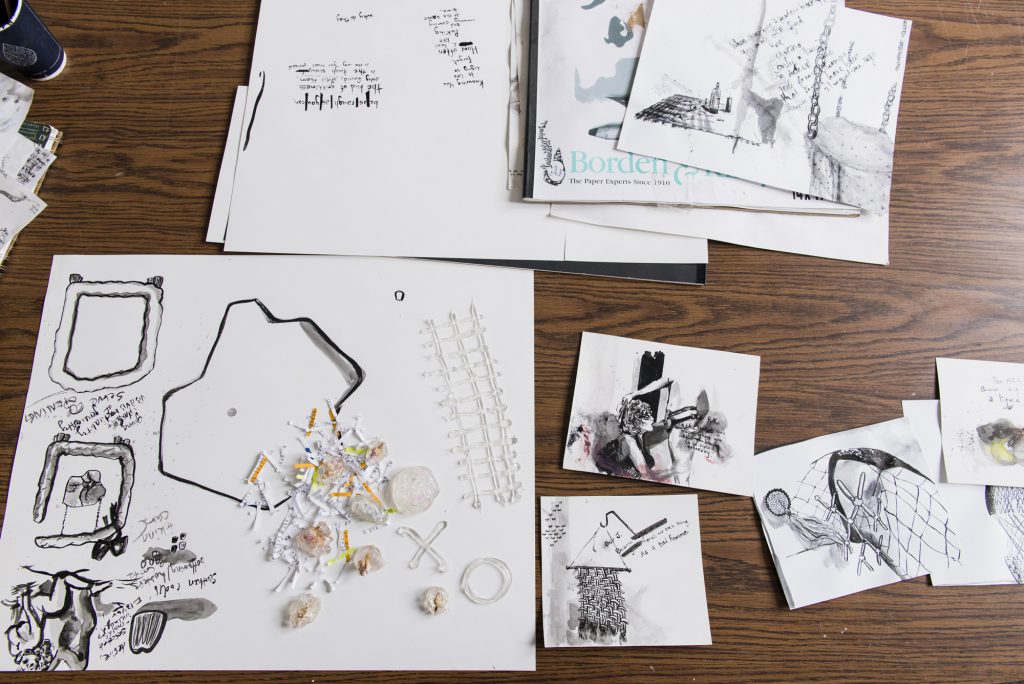
SNL: I remember you mentioning that to me one time when I ran into you at a show. And I was like, “That is an amazing idea. That’s so awesome.” [laughter]
ASC: I’m also still working on this series called “Femme Remedies,” and so that’s more geared towards some different elements. They’re usually going to be below an average-sized person when they approach them. And so they’re kind of scaled so that one person can interact with them at a time. And they are usually made up of a lot of different found objects and are kind of these visual recipes — these “Femme Remedies” — or prescriptions. So they’re about kind of like how you self-care when you’re in an environment where your body is so pathologized.
There’s this complicated relationship, because when are you experiencing mental health issues and body issues and all of these things because of the force of hegemonic culture and this kind of systematic erasure of certain bodies? And when are you actually dealing with this biological issue? And that’s something that I struggled with a lot, and still do. And my mom’s an LCSW, so she’s a social worker therapist. And my dad is in mental health advocacy as well, in Virginia. So I have a lot of conversations about this with them. And with my chosen family. But in a lot of ways it is about not only myself, but those closest to me, or people who I research and feel a kinship with—and about making a physical object that tries (and fails a lot, but tries) to embody the question, “how do I actually go about taking care of myself?” So I guess the “HostX Gifts” is about what it means to try and earnestly give care and offer things to other people, while “Femme Remedies” are about a kind of inward looking or an inward care.

FEATURED IMAGE: Photo by Ryan Edmund Thiel. The artist is looking at the viewer with their body slightly turned. They are wearing a black outfit with yellow flowers. In the background are some of the artists colorful piece hanging on the wall.
 S. Nicole Lane is a visual artist and writer based in the South Side. Her work can be found on Playboy, Broadly, Rewire, i-D and other corners of the internet, where she discusses sexual health, wellness, and the arts. Follow her on Twitter.
S. Nicole Lane is a visual artist and writer based in the South Side. Her work can be found on Playboy, Broadly, Rewire, i-D and other corners of the internet, where she discusses sexual health, wellness, and the arts. Follow her on Twitter.
Photo by Jordan Levitt.
